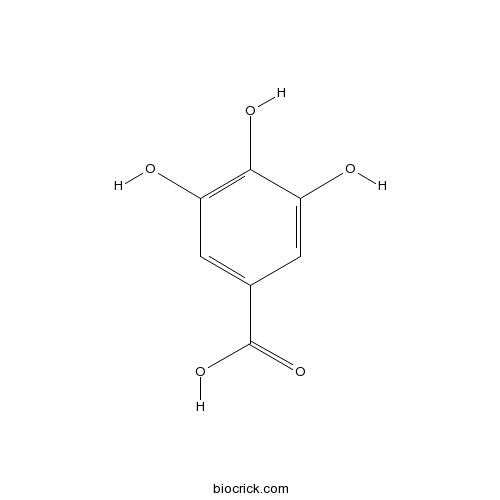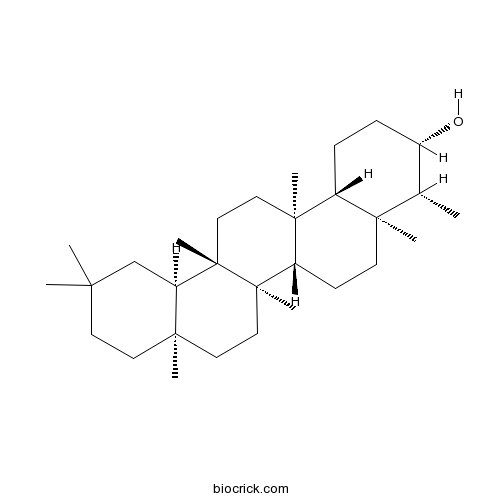Euphorbia lactea
Euphorbia lactea
1. The products in our compound library are selected from thousands of unique natural products; 2. It has the characteristics of diverse structure, diverse sources and wide coverage of activities; 3. Provide information on the activity of products from major journals, patents and research reports around the world, providing theoretical direction and research basis for further research and screening; 4. Free combination according to the type, source, target and disease of natural product; 5. The compound powder is placed in a covered tube and then discharged into a 10 x 10 cryostat; 6. Transport in ice pack or dry ice pack. Please store it at -20 °C as soon as possible after receiving the product, and use it as soon as possible after opening.
Natural products/compounds from Euphorbia lactea
- Cat.No. Product Name CAS Number COA
-
BCN1668
Gallic acid149-91-7
Instructions

-
BCN1104
Epifriedelanol16844-71-6
Instructions

Stem fasciation in cacti and succulent species--tissue anatomy, protein pattern and RAPD polymorphisms.[Pubmed: 24013892]
Fasciated and normal stem segments of Opuntia microdasys, Opuntia cylindrica, Huernia primulina and Euphorbia lactea were collected from the same plant and compared for their anatomy, water relations and genetic variations. Anatomical differences in terms of thickness of cuticle, vascular bundle, xylem and phloem were analyzed in both normal and fasciated stems. The mucilage cells were higher in the fasciated form of Opuntia microdasys than that in the normal form. Water status in terms of total water content (TWC), water deficit and relative water content (RWC) was influenced by fasciation. Genetic variations were tested in normal and fasciated stems using randomly amplified polymorphic DNA (RAPD) fingerprints and SDS-PAGE of soluble protein extracts. SDS-PAGE protein and RAPD analysis confirmed that normal and fasciated tissues were genetically different. Polymerase chain reaction (PCR) yielded different polymorphic banding patterns that were unique to each primer and distinguishable over all samples. The PCR results of normal and fasciated samples were significantly different in cases of primers P1, P2 and P3. These results indicate that occurrence of fasciation in Opuntia microdasys, Opuntia cylindrica, Huernia primulina and Euphorbia lactea is an epigenetic mutation of tissues.
Effects of diterpenes from latex of Euphorbia lactea and Euphorbia laurifolia on human immunodeficiency virus type 1 reactivation.[Pubmed: 19897215]
The persistence of latent HIV-infected cellular reservoirs represents the major hurdle to virus eradication in patients treated with highly active antiretroviral therapy, referred to as HAART. HIV-1 reservoirs are long-lived resting CD4+ memory cells containing the virus latently integrated. Since the HIV-1 reservoirs are not targeted by HAART, reactivation therapy has been suggested to purge viral latency. Bioassay-guided study of an ethyl acetate extract of Euphorbia laurifolia afforded two isomeric diterpenes that showed differential activity over HIV-1 reactivation. A previously reported compound was isolated too from Euphorbia lactea. This compound showed a potent HIV-1 reactivating effect. Bioassays results showed that HIV-1 reactivation activity is influenced by distinct structural characteristics.
Topical anti-inflammatory effect of tirucallol, a triterpene isolated from Euphorbia lactea latex.[Pubmed: 19577446]
Latex from Euphorbia lactea (Euphorbiaceae), a native Dominican medicinal plant, is claimed to be useful in the treatment of inflammation. Topical application of tirucallol, a tetracyclic triterpene isolated from Euphorbia lacteal latex, suppressed ear edema in the mouse model in a dose-dependent manner, as well as affecting the influx of polymorphonuclear cells in response to topical application of 12-O-tetradecanoylphorbol-acetate (TPA) in the mouse ear. In addition, the effect of tirucallol, on some macrophage functions was analyzed in vitro. Non-toxic concentrations of tirucallol potently inhibited nitrite production in lipopolysaccharide-stimulated macrophages. Western blot analysis showed that nitric oxide reduction was a consequence of the inhibition of inducible nitric oxide synthetase expression although tirucallol slightly affected to prostaglandin E(2) (PGE(2)) generation. The results of the study revealed that tirucallol (0.3%), present in Euphorbia lactea latex, exerts a topical anti-inflammatory effect in vivo, via a mechanism of action related to the neutrophil migration. On the other hand, it can be deduced that the mechanism of the anti-inflammatory activity of this triterpene is related to the control of the production of NO and its effect on the expression of iNOS.
Euphorbia lactea sap keratouveitis: case report and review of the literature.[Pubmed: 17592331]
To describe a case of Euphorbia lactea sap keratouveitis and to review all reported cases of ocular toxicity caused by Euphorbia species.
Molluscicidal effect of fungicide, herbicide and plant extract on some biological and physiological parameters of Biomphalaria alexandrina.[Pubmed: 12512815]
In was found that the exposure of B. alexandrina to LC25 of fungicide (Isoprothiolane), herbicide (Anilofos) and plant extract (Euphorbia lactea) led to highly significantly elevated in the number of abnormal egg masses laid by treated snails in comparison with the control ones. The LC25 caused reduction in infection rate of B. alexandrina. It caused reduction in number of cercariae per snail during the patent period and reduction in the period of cercarial shedding. The results obtained showed that adenosine triphosphatase (ATPase) activity of tissue of snails was significantly increased in response to tested substances. The activity level of lactate dehydrogenase (LDH). pyruvate kinase (PK) and phosphoenolpyruvate carboxy kinase (PEPCK) was significantly reduced in response to treatment. This reduction does not reflect on both D. lactate and pyruvate concentrations.


